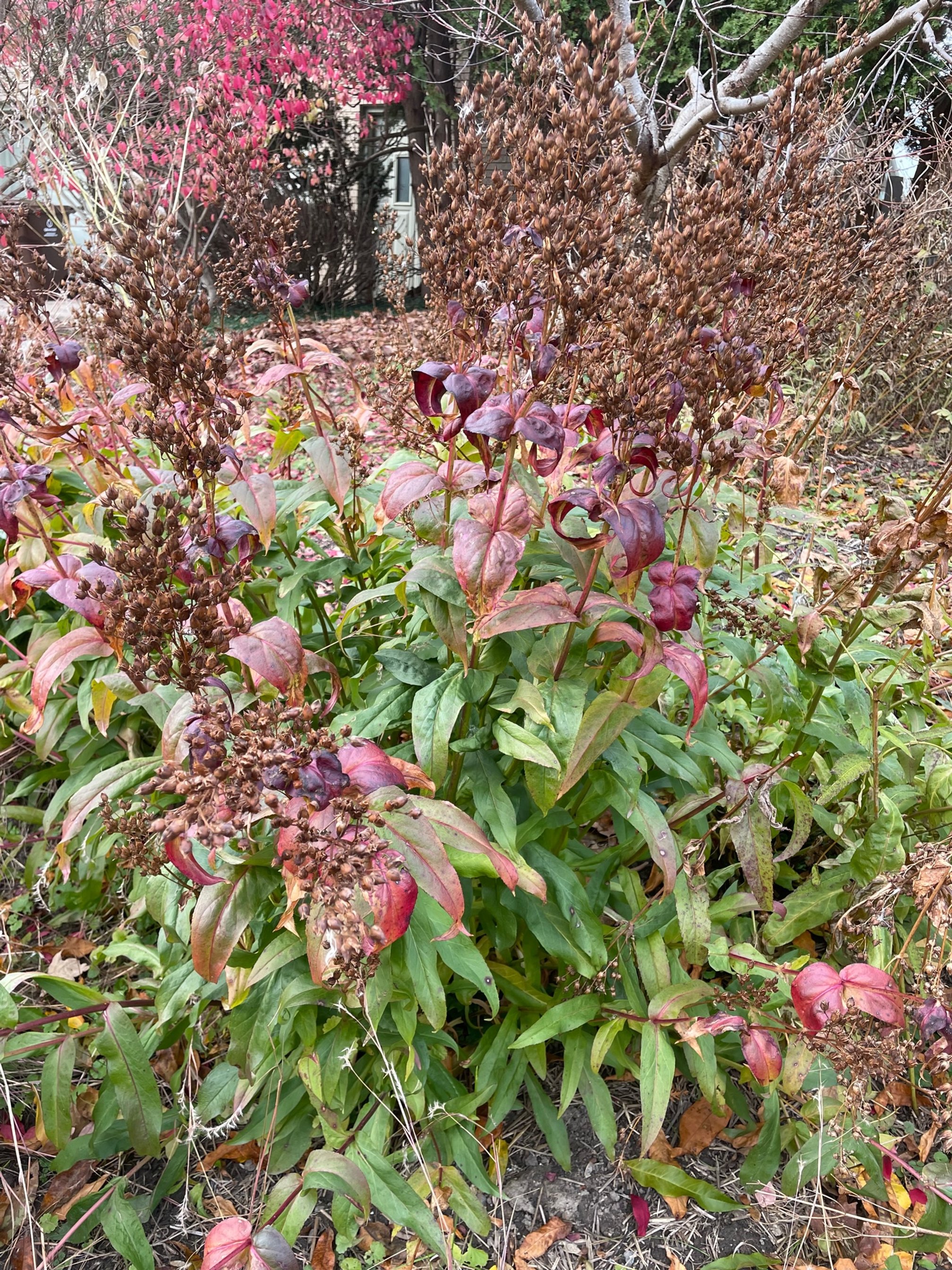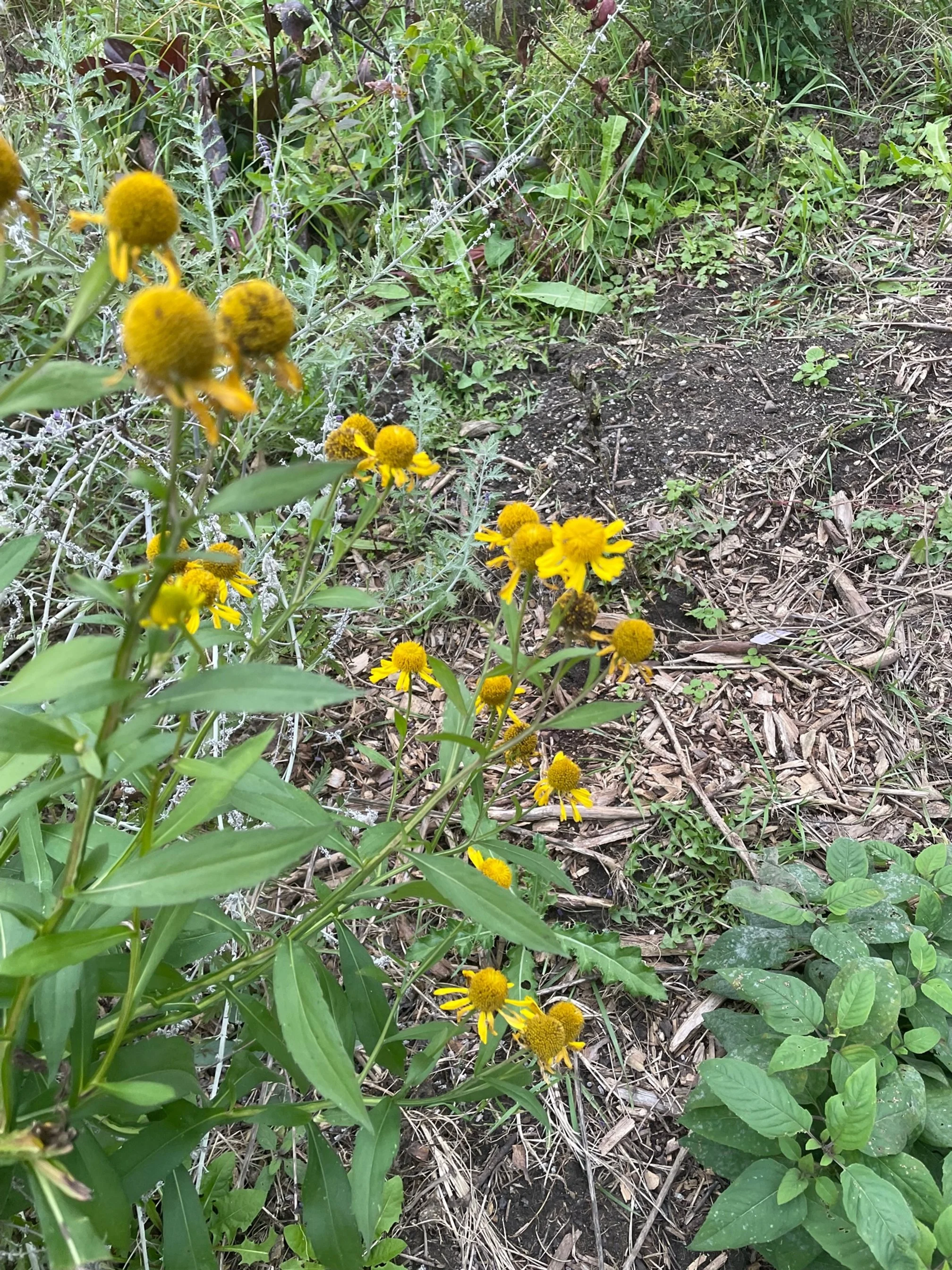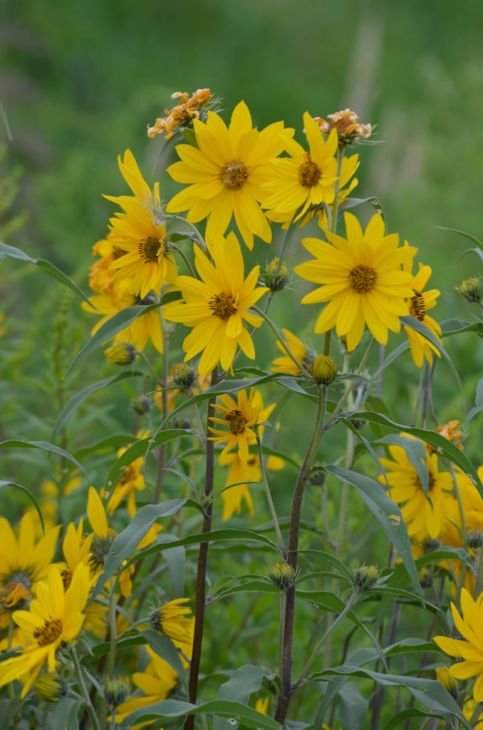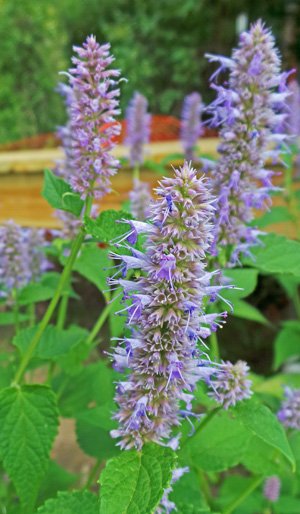Tried and Tested Deer-Resistant Plants (Part 2)
This post is a follow-up to the popular Part 1 blog from a couple of weeks ago. I hope these posts help to reduce your frustrations with the hungry deer.
I also hope that these posts make it easier to transform more of your lawn into healthy and sustainable home landscapes.
Why it matters: More flowering plants, especially native plants, provide habitat (food, breeding areas, places to rest) for pollinators (explore what a pollinator is). Pollinators make our food system possible but their numbers are falling fast due to habitat destruction and pesticide use. (Learn more here: Blog: Insects are in Trouble; Three Articles That Explain Why and How You Can Help.)
Suburban landscaping practices can make a huge, positive difference! Learn more at Smarter Pest Management: Protecting Pollinators at Home.
Onto the plants!
Little Bluestem
I am a late-comer to recognizing the beauty and utility of grasses. I’m going to give you two, starting with little bluestem. I’ve got a few of varieties of this, a couple of which are referred to as “nativars.” A cross between a native plant and a fancy cultivated variety (cultivar), nativars may not provide the ecological service that native plants do. I bought them before I realized that was the case, and I’ve been sure to also include a native variety in my landscaping. Buy native varieties from nurseries specializing in native plants, such as Wildtype, Blazing Star Gardens, and Designs by Nature.
Why I like it:
Provides vertical structure,
Turns color from green to purplish red as the season progresses,
Provides pollen and nesting material for native bees and other pollinators.
Prairie Dropseed
Prairie Dropseed is a shorter clumping native grass that can grow to be quite dense, which means it’s good for shading out weeds. It is slow growing, but it is very attractive planted in large drifts, or just a few along the front of a border. Mine is still young so I’ve borrowed a picture from the internet (credit: https://www.prairienursery.com/prairie-dropseed-sporobolus-heterolepis.html).
Why I like it:
Crowds out weeds.
Low maintenance ground cover and can replace lawn.
Looks great mixed in with flowering plants, and along front of perennial beds.
A host for a number of endangered moths and butterflies.
Learn more at https://hort.extension.wisc.edu/articles/prairie-dropseed-sporobolus-heterolepis/.
Bulbs: Daffodils and alliums!
I’ve never had a problem with any critters munching on allium or daffodil foliage or bulbs. Given our mild weather, it’s still not too late to plant. You can find good deals right now, too! (Click on the pictures below to learn more).
Why I like them:
There are so many varieties to choose from. There are not only lots of different colors, heights, and sizes, but different bloom times, too.
More so than the daffodils, pollinators love alliums.
Many varieties are very sweet smelling and can make for lovely early- to mid-spring walks through the garden.
There are many varieties that will naturalize, meaning you can plant them and they will spread.
Rhubarb
One of my all time favorite plants is rhubarb. I don’t know why any house with any yard space at all would be without it.
I give a lot of my garden space to rhubarb because I harvest it to make syrup, but there are lots of reasons to grow it.
Why I like it:
It’s useful and you can make a ton of stuff with it.
It’s dramatic in the garden. Ruffly, giant leaves; red stalks, tall flowers (I see a lot of advice online that says you shouldn’t let rhubarb flower, but I let mine flower and it still produces a lot of stalks.)
Learn more at https://hort.extension.wisc.edu/articles/rhubarb-rheum-rhabarbarum/
Peach
It seems strange, but deer do not like peaches, neither the leaves nor the fruit. You can get dwarf and semi-dwarf varieties of peach, which is nice because you tuck them into a suburban garden and not worry that they’ll shade out too big an area.
Why I like it:
Peaches!
(It’s also an attractive tree, but I grow it for the peaches 🍑)
I don’t remember where I got my particular tree, but I have often bought fruit trees from Stark Brothers, which might be a good place to start your search. Make sure to buy for your hardiness zone. Mid-Michigan is Zone 5b.
Daphne
Daphne doesn’t do a whole lot ecologically so I probably shouldn’t like it as much as I do. It’s not native and I don’t harvest anything from it. But, I like it so much that I once named a very good dog after it.
Very Good Dog Daphne ❤️
There are several varieties of Daphne the bush. I have one older one (Daphne xburkwoodii), pictured below, and two new ones which I just planted this year. The ones I planted this year are Daphne odoraxbholua, popularly known as Perfume Princess. I got them from Wayside Gardens.
Daphne xburkwoodii ‘Carol Mackie’
I like Daphne because:
It is evergreen.
It makes for an attractive foundation plant.
The flowers are very sweet smelling.
I sometimes put the foliage in flower arrangements and it looks very nice and is long-lasting.
Learn more at https://hort.extension.wisc.edu/articles/daphne-xburkwoodii-carol-mackie/.
Echinops
Also called globe thistle, this is a non-native perennial with round, purple flowers. It grows to be about 3 to 4 feet tall, so good for the middle or back of a perennial bed. As you might expect from its common name, it has spiky leaves, which is probably what keeps the deer away. However, pollinators and birds love it! I love it because:
It blooms for a long time, especially if you deadhead it.
Birds and pollinators love it.
It’s low maintenance.
It spreads (slowly).
It looks good in flower arrangements.
A Variety of Native Plants
I could go on for a very long time about all the native plants that deer do not eat. There are soooo many and such variety! I’ll post several, and then point you towards resources that can help you plan your gardens.
For all the plants that I’m posting here, I like them because:
They provide habitat for pollinators.
Many of them have seeds that birds like.
Most importantly, they make ecological sense!
Most of them are doing a lot of work underground, too! Many of them build extensive root networks, which means they are taking carbon from the air and putting into their roots. This is why these plants make a lot more sense than lawn. Every bit of carbon that we can remove from the atmosphere, or keep from going into the atmosphere in the first place, matters.
Click on the picture for more information about that plant. You can move through the slideshow by clicking on the thumbnails below the main picture.





There are still so many plants to choose from! The various monardas, yellow coneflower, witch hazel….the list goes on. But this post and Part 1 are a good start, I should think. I’ve suggested natives and non-natives; trees, grasses, bushes, and flowers; edible and non-edible.
For your gardening adventures, learn more at:
There are many resources out there to help you plan your garden, many of them free.
And remember, if you don’t like where you put a plant the first time, you can (usually) move it!




















